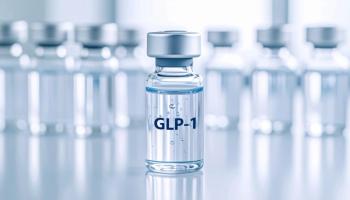
Individuals With COVID-19 Are Most Likely to Transmit Virus 2 Days Before, 3 Days After Symptoms Develop
Individuals with COVID-19 were more likely to be asymptomatic if they contracted the virus from a primary case that was also asymptomatic.
Individuals infected with SARS-CoV-2 are the most contagious 2 days before they develop symptoms and 3 days after, according to a study published in JAMA Internal Medicine. The study also found that individuals with COVID-19 were more likely to be asymptomatic if they contracted the virus from a primary case that was also asymptomatic.
The investigators conducted contact tracing and studied COVID-19 transmission between nearly 9000 close contacts of primary cases between January 2020 and August 2020. Close contacts included those living in the same household, co-workers, people in hospital settings, and riders in shared vehicles. They monitored individuals infected with SARS-CoV-2 for at least 90 days following an initial positive test to distinguish between asymptomatic and pre-symptomatic cases.
“In previous studies, viral load has been used as an indirect measure of transmission,” said Leonardo Martinez, PhD, assistant professor of epidemiology at BUSPH, in a press release. “We wanted to see if results from these past studies, which show that that COVID cases are most transmissible a few days before and after symptom onset, could be confirmed by looking at secondary cases among close contacts.”
Among participants identified as primary cases, 89% developed mild or moderate symptoms whereas 11% were asymptomatic. None of these individuals developed severe symptoms. Household members of the primary cases, as well as those exposed multiple times or for longer durations, were more likely to become infected than other close contacts. Regardless of these risk factors, close contacts were more likely to contract COVID-19 from the primary infected individual if they were exposed shortly before or after the development of symptoms in that individual.
According to the investigators, asymptomatic primary cases were much less likely to transmit the virus to close contacts. Further, if viral transmission took place, those contacts were also less likely to develop noticeable symptoms.
“Our results suggest that the timing of exposure relative to primary-case symptoms is important for transmission, and this understanding provides further evidence that rapid testing and quarantine after someone is feeling sick is a critical step to control the epidemic,” Martinez said in the release. “This study further emphasizes the need for vaccination, which reduces clinical severity among people that develop COVID.”
REFERENCE
COVID-19 is most transmissible 2 days before and 3 days after symptoms appear [news release]. EurekAlert; August 24, 2021. Accessed August 25, 2021.
Newsletter
Stay informed on drug updates, treatment guidelines, and pharmacy practice trends—subscribe to Pharmacy Times for weekly clinical insights.

















































































































































































































